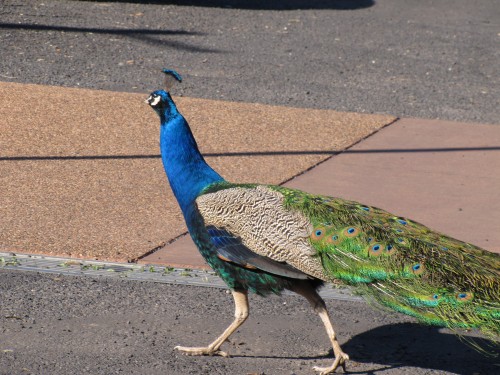Bird Word: Feral
Feral: a domesticated species that has been released or has escaped into the wild and is now living independently.
From time to time members of a species of bird escape from aviaries or captivity, or are deliberately released into the wild for a range of reasons. If a group of these individuals becomes established and start breeding they can form a feral population of that species.
A classic case of this occurred in the USA some years ago. The Australian Budgerigar is probably the most popular cage bird in the world. Individuals that escaped or were released from captivity soon started breeding and eventually established large flocks in the wild where they continued to flourish for some time. Naturally, this deprived local natural species of both food and nesting sites and were therefore a pest species. In more recent years I understand this population has begun to die out.
Australian feral populations:
A number of species have established feral populations in parts of Australia. These include:
- various species of geese and ducks
- Red Junglefowl on some islands off the coast of Queensland
- Common Pheasant – various locations, including King Island, Bass Strait
- Wild Turkey – on Flinders and King Islands, Bass Strait.
- Indian Peafowl – various locations, including Flinders and King Islands (see photo below)
- California Quail – King Island.
- Mute Swan – in Western Australia.
- Ostrich – these were farmed for their plumes in various locations, mainly in South Australia, in the 1800s. They were released into the wild where they established small feral populations. Small groups were reported from the Port Augusta region until very recently. Some may still survive.
Further reading:
